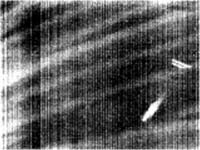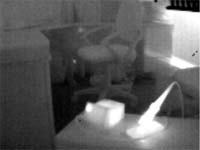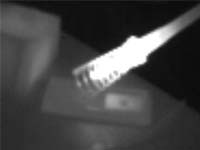Fire SuppressionArgus Thermal Imaging CamerasBetter Image QualityDigital Signal Processing Raw Image  Processed Image The raw image from a microbolometer is very poor. Image quality comes from:
Argus (e2v) has developed custom algorithms to produce excellent images out of the clutter. As you can see from the pictures below, there is a noticeable difference with the excellent filtering done by Argus to clean up the digital signals and provide a clearer image. Competitors purchasing their TIC Cores from OEMs have no direct control over what is done by the OEM to process the image. Gain / Offset Correction
Dead Pixel CorrectionMicrobolometers often have a number of ‘dead’ pixels which cannot be corrected by normal gain and offset correction. This can be as high as 5% of the image. With Argus’ custom algorithms, they “could” have up to 54% dead pixels without the user seeing a major difference.
←
Image Filtering
←
|
|

